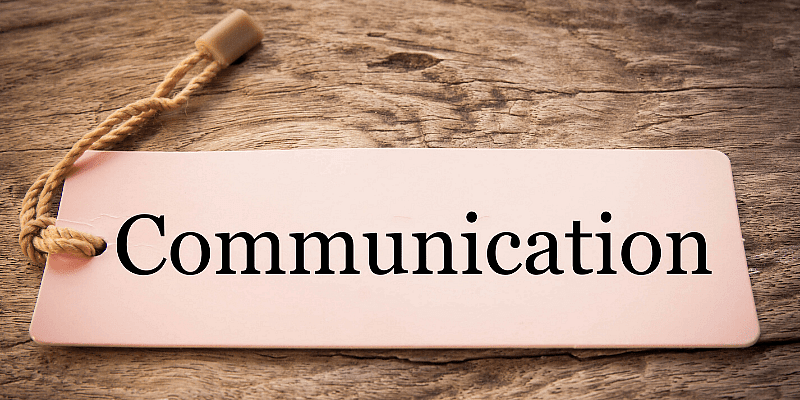Before 2020, we used to visit the digital realm mostly for leisure and recreation in between our daily schedules. The pandemic has reversed that dynamic and, perhaps, irrevocably inverted the relationship between our physical and digital realities. This transposition has also thrown into sharper relief a fact that we rarely acknowledge: the pace of technological evolution today far exceeds that of human biology.
In essence, we are “an archaic species in transition,” that is only just coping with a sea-change in the world around it. With the COVID-19 outbreak forcing another major shift in how we function, this gap between our technological capabilities and cognitive readiness is manifesting as issues such as Zoom fatigue and digital exhaustion.
But why is this information relevant for brands in the digital-first age? Because, it has a direct impact on their communication strategies, which are taking place almost exclusively in the digital realm.
Why brands need to engage people instead of ‘customers’
In the post-2020 world, not logging into our social media accounts or business platforms is not an option. Following the viral outbreak, most of what comprised our normal behaviour including, but not limited to, working, engaging with friends, and communicating with brands, has shifted online.
Not only has technology begun playing a greater role in the way users are engaging with brands in the post-pandemic landscape, but many are also more willing to communicate with brands on digital channels.
However, for the reasons mentioned above, this shift online hasn’t been easy on any of us. Faced with an overwhelming flow of information on the screens, users are finding ways to adapt to — and indeed, cope with — the new normal, be it consciously or subconsciously.
One such tactic involves deliberately ignoring, as well as subconsciously filtering out, content perceived to be irrelevant, generic, and targeted at a depersonalised pool of “consumers” instead of actual people.
As a result, a majority of consumers feel that the brand communication they come across lacks a personalised bent or human connection. This leads many of them to ignore such messages that they perceive as being designed to only bump up target figures instead of sincerely engaging with people. The quality of communications, or its lack thereof, can also cause customers, across all age groups, to switch their choice of brands.
The lesson for discerning brands is loud and clear: they need to change the way they communicate with people or be sidelined by their peers who can effectively transform their engagement strategy in sync with the changing consumer sensibilities and preferences.
How brands can optimise their engagement strategies
The advantages that brands stand to tap into by making their communication strategies more empathetic and engaging are many. If done right, brands can boost their customers’ loyalty. As any business that has attempted to effectively engage with its customers knows, this is easier said than done.
For one, modern engagement strategies need technological paraphernalia to make them sharper. At the same time, in the momentum of sharpening the engagement strategies, brands must not lose sight of a crucial point: the so-called “target segment” actually consists of human beings. Therefore, instead of thinking of deploying an engagement strategy as casting a net to capture as many fish as possible, the aim of business communication today should be to speak to a person.
This brings us to the first major characteristic of the modern engagement strategy:
Hyper-personalisation
A successful brand engagement speaks to individual customers as if the brand cares about them in a personal capacity and values them as a human being and not merely as a customer who exists isolated from their socio-cultural context. The reason behind this is simple.
Users today are more aware and quick to identify when they are being sold to. And they simply do not have patience for marketing strategies that reduce them to mere numbers on a sheet. The fact is simple: impersonal messages annoy people. Brands, therefore, need to target each user with customised messaging to make them feel valued.
New-age tech tools exist today that can help brands to optimise their messages based on their past interactions with each customer as well as each customer’s behavioural pattern.
By leveraging insights of granular level, brands can determine the trajectory of a customer’s transforming sensibilities and preferences. Doing this can equip them to deliver the right kind of message at the right time over the channel of the customer’s choice.
Omnichannel engagement
Using the same kind of messaging over different digital channels is no longer an effective strategy. Each digital channel is government by a distinct set of netiquettes, which is also the reason why the choice of preferred digital platform varies user by user. If every user were receiving a homogeneous experience across all channels, they would never switch between different apps.
Today, however, users are exerting their digital identities across several platforms differently. The reason they log on to their favourite digital channels is that they are seeking different experiences. They ignore anything and everything that fails to attract and hold their attention.
Businesses are growing cognizant of the need to be mindful of what kind of content they are releasing on a particular channel. To effectively engage a customer over their preferred digital channel, the brand content should be optimised not only in terms of the format prevalent on a digital channel, but also how a customer responds to it. This is where tech-based tools are helping brands to creatively reach out to their customers over SMS, phone calls, RCS, chat app, or social media platforms.
Well-timed, event-triggered messaging
A user’s time is sacred. While users are spending more time on social media today, they are doing it as a pastime, as a leisure activity. It can be understood as a stroll in a park where their only expectation is to have some quality time by themselves. Therefore, a user’s presence on social media should not be confused with their openness to being targeted by ads.
The marketing efforts should not intrude upon the experience of a user, but seek to enrich it. Tech tools powered by automation and analytics can help brands to identify not only what type of content will maximise engagement but also at what time during a customer’s digital journey it will be most effective.
For instance, a D2C seller can leverage such a solution to send an automatic reminder to a customer encouraging them to gift their product on the occasion of their spouse’s birthday.
Such event-triggered messaging can only be achieved on the back of a high level of focus on personalisation along with analytics-driven insights to determine what type of messaging will maximise the rate of conversion over which platform for a specific customer.
This means that the three aspects of a well-thought-out engagement strategy are not mutually exclusive, rather they inform and enable each other.
Consequently, new-age UCaaS and SaaS players are offering advanced omnichannel engagement hubs to enhance a brand’s engagement strategy with a personalised, omnichannel, and well-timed approach all through a single platform.
The future of the business ecosystem is undeniably digital, and so is the future of business communications. And only those brands that will be equipped to deliver optimal experiences to their customers at every step of their digital journey will be able to thrive in the rapidly evolving, highly volatile marketplace of the future.
(Disclaimer: The views and opinions expressed in this article are those of the author and do not necessarily reflect the views of YourStory.)









